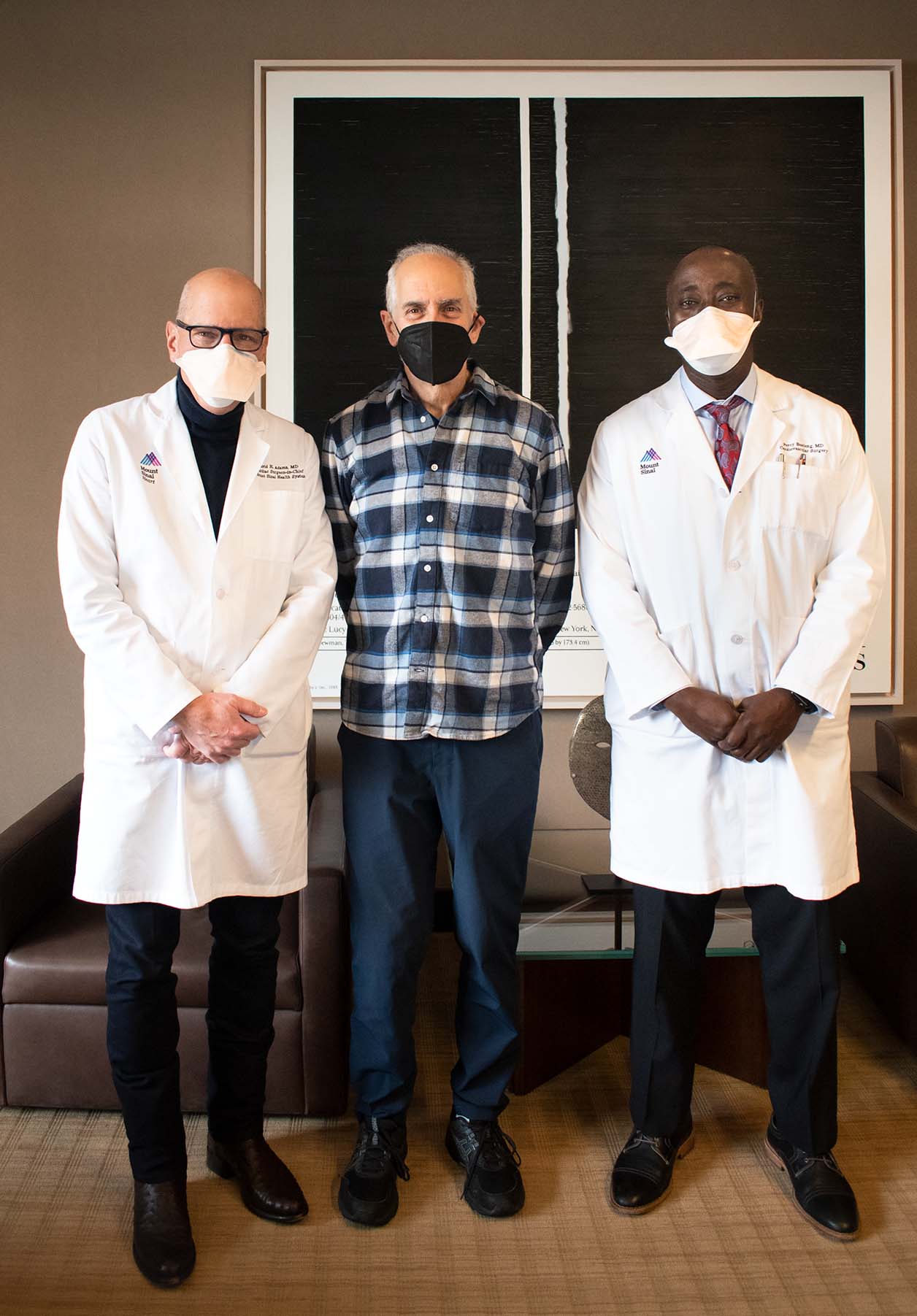Allen G.

After Allen G.’s annual physical last summer at the Mayo Clinic – a medical benefit his company provides to senior executives – he learned that his mitral valve was not closing properly.
As a fit 67-year-old who worked out daily and felt no symptoms whatsoever, the discovery came as a shock. While Allen already knew he had an irregular aortic valve – a congenital condition – he had been unaware that he suffered mitral valve prolapse, too.
A prolapsing valve causes blood to flow backward into the left atrium, putting strain on other parts of the heart. Left untreated, it can eventually become fatal. So, as a business executive accustomed to resolving problems before they escalate into crises, Allen decided to seek treatment as soon as possible.
After researching the best hospitals for valve repair, Allen learned about the The Mount Sinai Hospital – one of the nation’s preeminent centers for valve repair. A neighbor had recently had surgery with the System Director of Aortic Surgery at the Mount Sinai Health System, Dr. Ismail El-Hamamsy, so Allen booked a consultation. He met with Dr. El-Hamamsy who identified his primary issue as a mitral valve dysfunction. Dr. El-Hamamsy then connected him with Dr. Percy Boateng and Dr. David H. Adams, the Cardiac Surgeon-in-Chief of the Mount Sinai Health System.
As soon as he sat down with the doctors, Allen relaxed. “There’s a Yiddish word, heimish, which means familiar, warm, unpretentious, homelike,” he said. “I just had a comfort level with the team, that I was a real person, not just a number showing up on a Monday morning. They looked at my chart and explained my treatment options, so I could make an informed choice.”
Unlike many other surgical centers, The Mount Sinai Hospital’s surgeons always operate as a team, with each surgeon providing their specific expertise, and performing different aspects of the surgery. This proactive, collaborative approach has proven to yield the best medical results, and gave Allen peace of mind. “I knew there might be audibles once my chest was open, but I was confident they had a good plan,” he said.
His surgery turned out to be long and complex. First, Dr. Adams and Dr. Boateng performed a delicate repair of a torn chordae – one of the tiny, springlike tendons that attach to the mitral valve leaflets, the flaps that open and close as the heart pumps. Next, they carefully reshaped part of one mitral leaflet, for better closure, before implanting an annuloplasty ring to correct and reinforce the mitral valve’s overall aperture.
Next up was Dr. El-Hamamsy, to address Allen’s aortic problem. Dr. El-Hamamsy repaired two weak sections of the aorta with grafts and worked to improve the shape and function of the aortic valve itself, which in this case had two leaflets instead of the normal three. Given that this valve repair addressed a congenital problem, Allen left the operating room with a heart that was actually better than new.
Allen's recovery has been swift. Less than a month after surgery, he is already walking four miles per day, and feeling good mentally, too. “Looking back, my initial feeling of comfort with the team was fully justified. Every person I dealt with was kind, helpful and professional as I confronted major heart surgery. From Lenore who welcomed me during intake, to the nurses and physician assistants and surgeons who did the operation, to Cesar who helped me through those first days of recovery, my care was extraordinary,” he said.
“I would recommend this team to anyone. These guys part the Red Sea.”